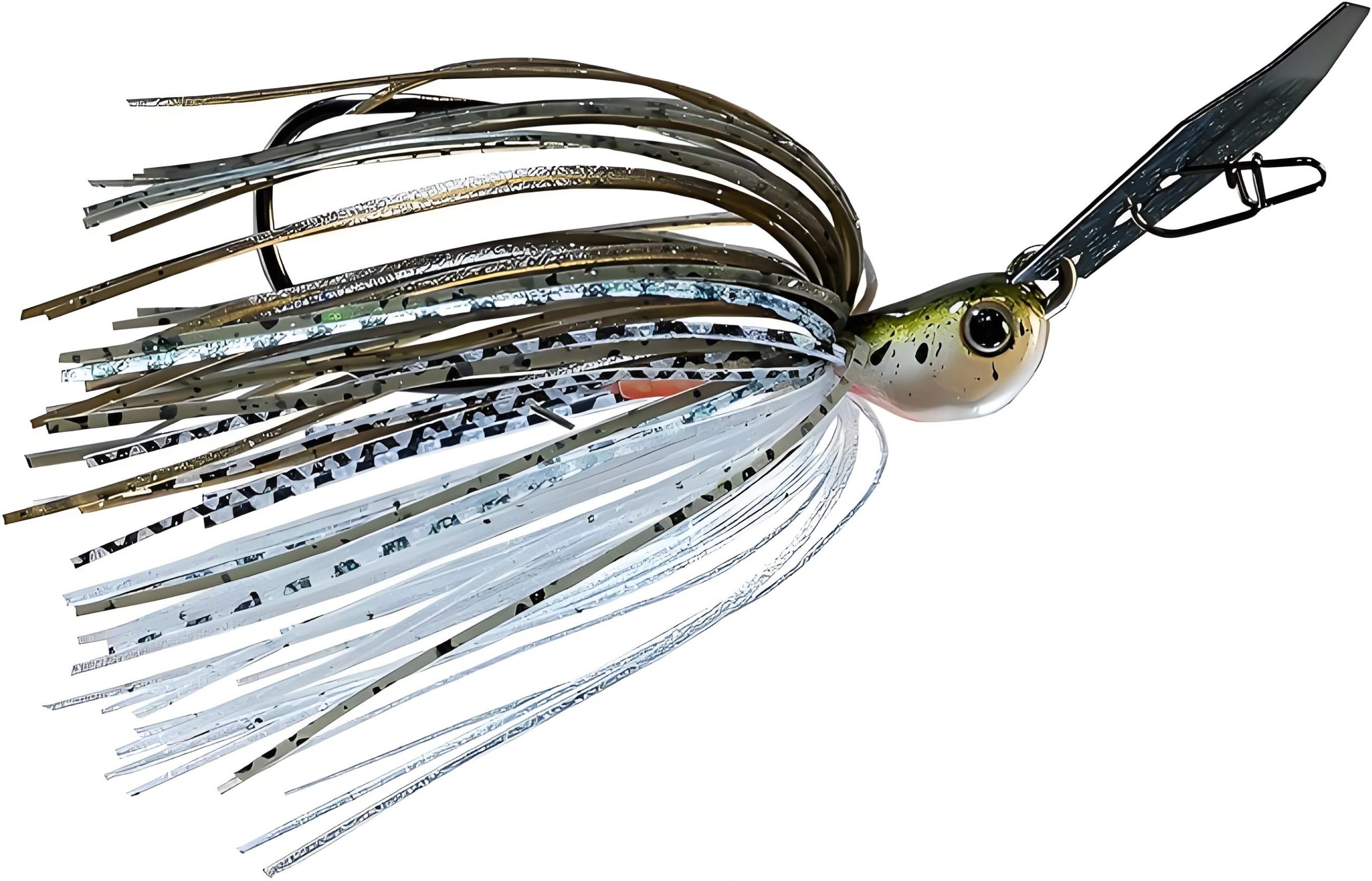Largemouth bass are one of the most thrilling freshwater species to target, and anglers constantly seek lures that deliver explosive strikes. The chatterbait, a hybrid vibrating jig, stands out for its ability to combine flash, vibration, and erratic movement—making it irresistible to bass. Whether you’re navigating dense vegetation, rocky bottoms, or open water, understanding how to maximize this lure’s potential can transform your fishing game. Below, we dive into proven strategies, gear recommendations, and seasonal tips to help you master chatterbait fishing.
Why Chatterbaits Dominate for Largemouth Bass
Chatterbaits thrive by engaging a bass’s primal instincts. The lure’s metal blade generates intense vibrations and a rhythmic clicking noise, detectable through a fish’s lateral line. This sensory advantage makes chatterbaits deadly in low-visibility conditions like murky water or thick weeds, where bass rely more on movement and sound than sight. The design also allows flexibility: fish it high, low, fast, or slow, adapting to the bass’s mood and habitat.

Optimizing Your Chatterbait Setup
The right gear ensures your chatterbait performs flawlessly:
Rod and Reel: A medium-heavy rod between 7 and 7.5 feet offers the ideal balance of power and sensitivity. Pair it with a high-speed reel for quick retrieves, especially when working the lure through cover. Graphite rods provide lightweight control, while fiberglass options add durability for battling hard-fighting bass.
Line Choice: Braided line excels in heavy vegetation due to its strength and minimal stretch. In clearer water, fluorocarbon’s invisibility and abrasion resistance make it a top pick.
hook Quality: Always check the fishing hooks on your chatterbait. Sharp, sturdy hooks are critical for securing solid hooksets, particularly when targeting large bass in dense cover. Consider upgrading to premium hooks if the stock options feel lacking.
Mastering Chatterbait Retrieval Techniques
Experiment with these methods to trigger reaction strikes:
Surface Burn: In warm water, retrieve the chatterbait rapidly just beneath the surface to create a wake. This mimics fleeing baitfish and works wonders around shallow flats or active schools. Alternate between speeding up and pausing to tempt hesitant followers.
Vegetation Tactics: Work the lure over submerged grass or lily pads, letting the blade tick the tops. When the bait drops into gaps, snap it upward to simulate prey escaping—a move that often results in heart-stopping strikes.
Bottom Dragging: Drag the chatterbait slowly along rocky or muddy bottoms near drop-offs or ledges. Use short hops to imitate crawfish or bottom-dwelling prey, pausing occasionally to let the lure settle.
Cover Deflection: Cast near logs, docks, or stumps, and bounce the chatterbait off hard structures. The sudden direction change mimics injured prey, triggering instinctive attacks from lurking bass.

Choosing Trailers and Colors
Trailers enhance the chatterbait’s action and realism:
Swimbaits: Paddle-tail trailers add lifelike tail action, perfect for mimicking shad or minnows. Opt for slender profiles in clear water and bulkier styles in stained conditions.
Creature Baits: Crawfish or bluegill-shaped trailers excel around wood or thick vegetation, offering a compact, fluttering profile that complements the lure’s vibration.
Color Strategy: Match the hatch based on water clarity. Darker colors like black/blue or junebug dominate in murky water, while natural hues like green pumpkin or shad patterns shine in clear conditions. Seasonal shifts, like crawfish-inspired reds in spring, can also boost success.
Seasonal Chatterbait Strategies
Adjust your approach as the year progresses:
Spring: Target shallow bays and spawning flats. Slow-roll chatterbaits near rocky banks or emerging grass, using trailers that mimic crawfish or bluegill.
Summer: Focus on deep weed edges, submerged humps, or offshore structure. Heavier chatterbaits help maintain contact with the bottom, while steady retrieves tempt suspended bass.
Fall: Burn the lure over shallow flats as bass feed aggressively before winter. Match baitfish migrations with shad-colored trailers and erratic retrieves.
Winter: Slow down in cold water. Drag the chatterbait methodically along deep channels or ledges, pausing frequently to entice sluggish bass.

Advanced Tips for Chatterbait Success
Blade Adjustments: Modify the blade’s tension to alter vibration intensity. A tighter bend creates wider wobbles for murky water, while a looser bend suits subtle presentations in clear conditions.
Weedless Modifications: Use trailers with weed guards or opt for chatterbaits with built-in brush guards to minimize snags in heavy cover.
Sound Enhancements: Add rattling beads or select chatterbaits with built-in sound chambers to amplify attraction in turbid water.
Final Thoughts
The chatterbait’s versatility makes it a year-round powerhouse for largemouth bass. By fine-tuning retrieves, trailers, and colors to match conditions, you’ll consistently outsmart even the wariest fish. Remember, patience and adaptability are key—observe the water, adjust your tactics, and let the chatterbait’s unique vibration do the rest. With the right fishing hooks, gear, and techniques, you’ll turn every cast into an opportunity for a trophy-sized catch.
This guide equips you with the knowledge to dominate with chatterbaits. Now, hit the water, trust the process, and prepare for the adrenaline rush of a bent rod and screaming drag!